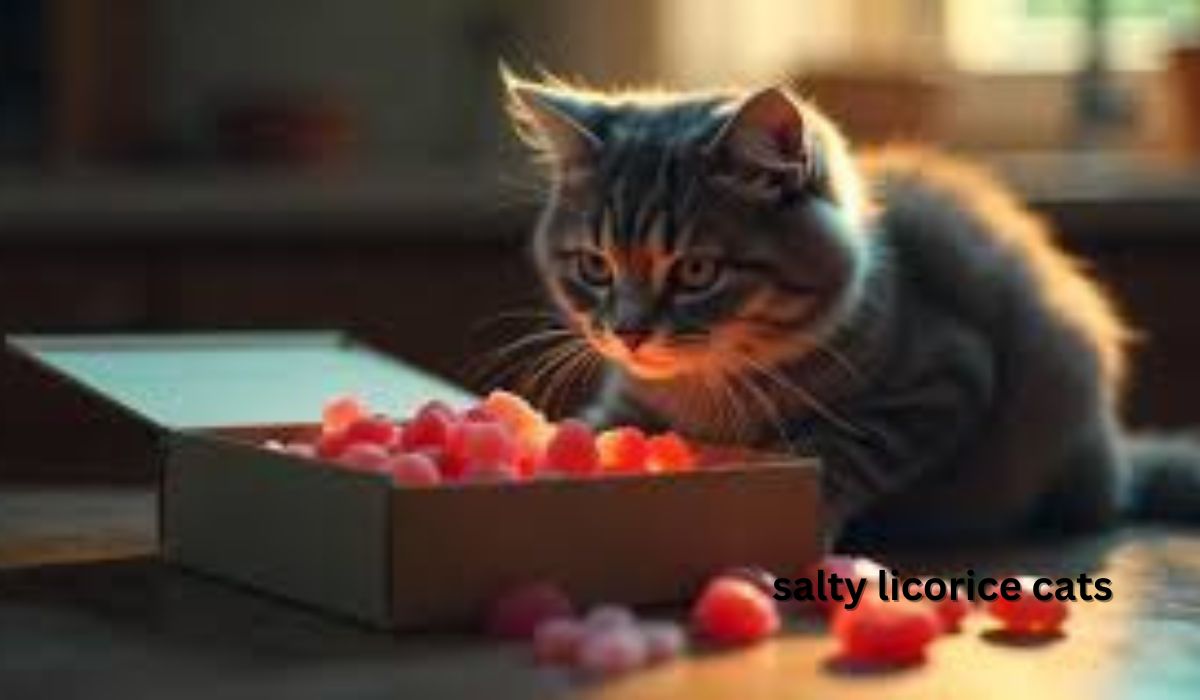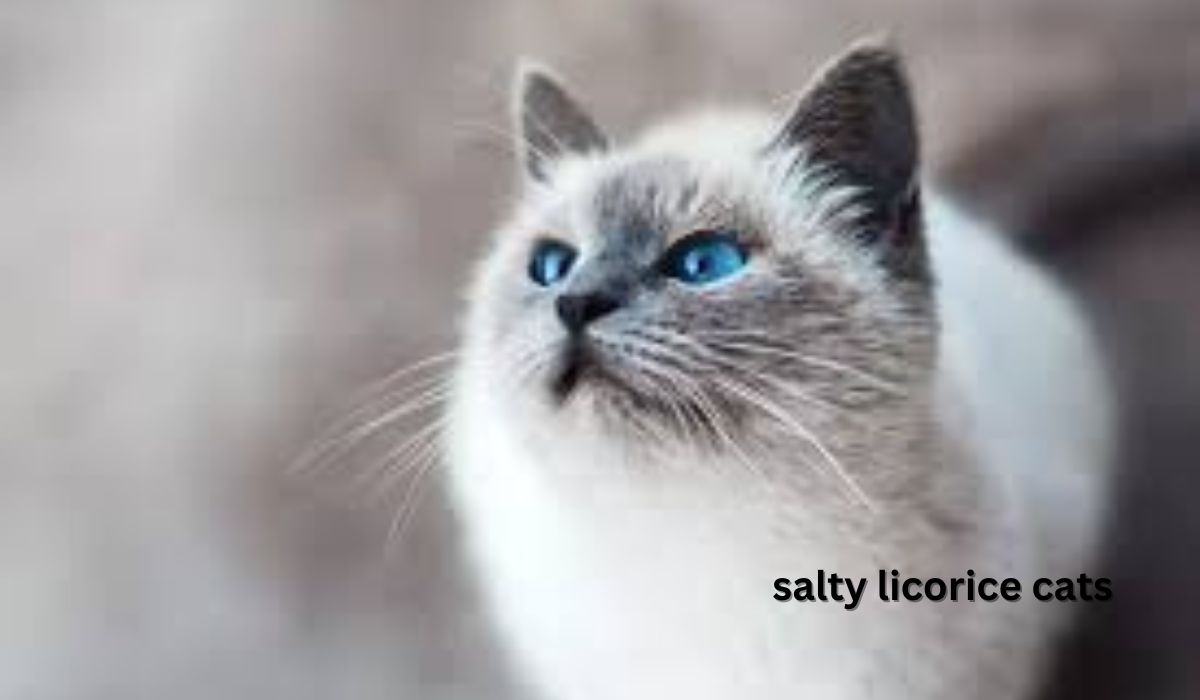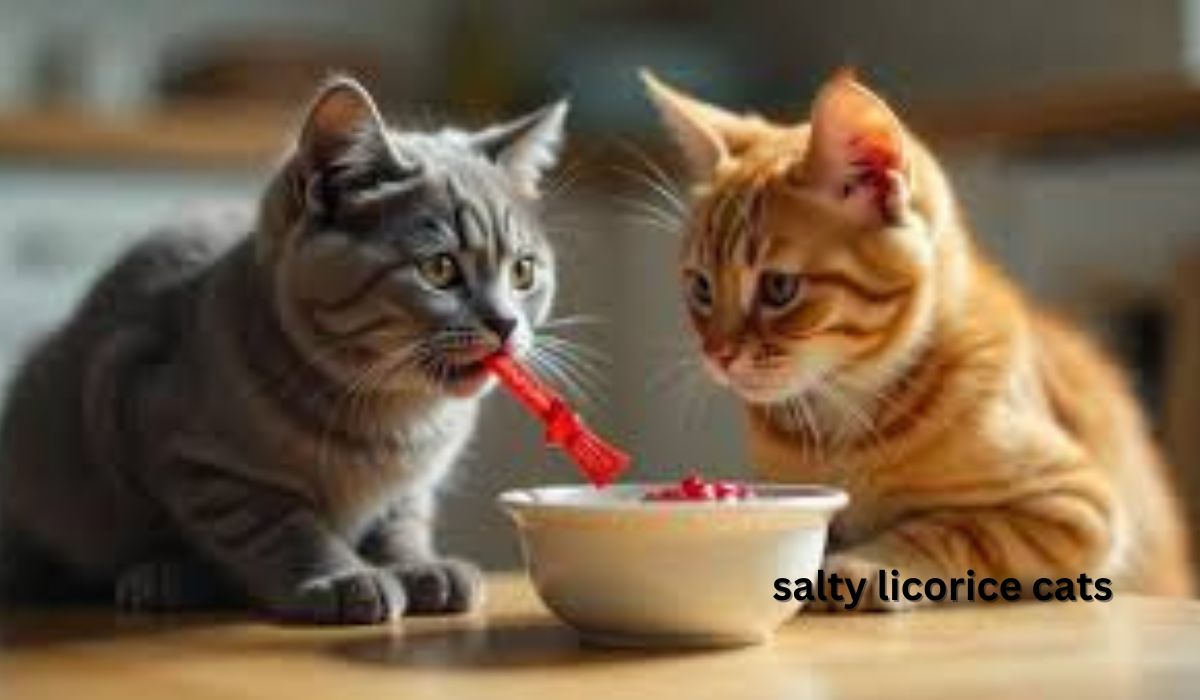If you’ve ever had a taste of salty licorice, you know it’s no ordinary candy. It’s a bold treat that challenges the norm of what candy should taste like—sweet and sugary. But add the shape of a cat to that licorice, and you’ve got a fun, quirky candy experience that’s especially popular in Nordic countries. aren’t just a treat; they’re a conversation starter, a taste adventure, and for some, an acquired taste.
In this article, we’ll explore everything you need to know about salty licorice cats: their origin, why they are loved (and sometimes disliked), and their cultural significance. Whether you’re a licorice lover or simply curious, let’s dive into the world of these salty feline-shaped treats.
What Are Salty Licorice Cats?
Salty licorice cats are candies shaped like cats, typically made from salty black licorice. This type of licorice is quite different from the sweet, fruity licorice found in most places. Salty licorice, often referred to as salmiak in the Nordic regions, gets its distinctive flavor from ammonium chloride, which gives it a salty and sometimes tangy bite. It’s a candy that can be an acquired taste, but for many, it’s irresistibly delicious.
A Brief History of Salty Licorice
The origins of salty licorice can be traced back to Scandinavia and the Netherlands, where it became popular in the early 20th century. These countries have long had a love affair with licorice, and the addition of salt, or more specifically ammonium chloride, created an entirely new taste experience. The salty version became a favorite among those who wanted something more complex and adventurous than the usual sweet candies.
The tradition of shaping the licorice into cats likely comes from the playful nature of candy-making, where whimsical shapes add to the fun. Cats, with their mysterious and independent nature, seem like the perfect mascot for this daring candy.
The Unique Flavor Profile of Salty Licorice Cats

What makes salty licorice cats so distinctive? It’s all about the flavor. The salty kick comes from ammonium chloride, giving the candy a sharp, tangy, and slightly bitter taste that contrasts with the sweetness of traditional licorice. Imagine the surprise of biting into something that looks like a typical sweet treat, only to have your taste buds hit with a salty jolt!
For many, it’s a love-it-or-hate-it experience. The taste can be compared to the shock of tasting sea salt in a chocolate bar. Initially surprising, but for some, it’s incredibly satisfying once you get used to it.
Why Do People Love Salty Licorice Cats?
So, why do people love these salty feline-shaped treats? For one, they offer a unique flavor experience that breaks the monotony of sugary sweets. People who enjoy bold, intense flavors are often drawn to salty licorice. Additionally, come with a sense of nostalgia for those who grew up in countries where this candy is a staple.
There’s also a sense of adventure in eating . They’re not for everyone, and that exclusivity makes them even more appealing to die-hard fans. Much like spicy food lovers, salty licorice enthusiasts enjoy the challenge and excitement of a candy that packs a punch.
Cultural Importance of Salty Licorice in Nordic Countries
In countries like Finland, Sweden, Denmark, and the Netherlands, salty licorice isn’t just a candy—it’s part of the cultural fabric. It’s common to find it in stores, from small mom-and-pop shops to major supermarkets. People often grow up eating salty licorice, and it’s a taste they acquire at a young age.
In these regions, salty licorice is as much a part of daily life as chocolate or gum might be elsewhere. It’s not uncommon to see salty licorice in different shapes and sizes, with the cat shape being a popular variation. For Nordic people, offering salty licorice is like offering a piece of their culture.
The Polarizing Effect of Salty Licorice Cats
Salty licorice cats are the perfect example of a candy that splits opinions. Some people adore the intense, salty flavor, while others can’t understand why anyone would eat something so far removed from typical sweet treats. This polarization is part of what makes so interesting. It’s not just candy—it’s a conversation piece.
Just like how some people love pineapple on pizza and others despise it, salty licorice cats create two camps: the fans and the skeptics. The experience of trying it for the first time often leads to strong reactions, which is part of its quirky charm.
Health Benefits of Salty Licorice Cats
Believe it or not, salty licorice can have some health benefits when consumed in moderation. Licorice root, the main ingredient in traditional licorice, has been used in herbal medicine for centuries to aid with digestion, sore throats, and even respiratory issues. Some believe that licorice can help soothe stomach problems or reduce inflammation.
However, it’s important to note that salty licorice contains ammonium chloride, which in large quantities can be harmful. That’s why salty licorice is best enjoyed as an occasional treat rather than a daily indulgence.
Where to Find Salty Licorice Cats

If you’re curious to try salty licorice cats, you’re in luck. While they might not be as common in the U.S. or other non-Nordic countries, they can often be found in specialty candy stores or online retailers. Popular brands include Haribo, Gerrit’s, and local Scandinavian candy makers.
If you’re feeling adventurous, look for them in sections dedicated to international foods or even in some boutique candy shops that specialize in imported sweets.
How Are Salty Licorice Cats Made?
The process of making is fascinating. Like most licorice candies, the base starts with licorice root extract. The salty punch comes from the addition of ammonium chloride, which gives the candy its characteristic flavor. The mixture is heated, cooled, and then shaped into the familiar cat form.
The manufacturing process can vary slightly depending on the brand, but the essential elements remain the same: bold flavors, chewy texture, and that iconic cat shape.
Variations of Salty Licorice Cats
Though the traditional salty licorice cat is made with black licorice, there are variations to suit different tastes. Some versions are extra salty, for those who can’t get enough of that strong flavor, while others are milder for beginners. There are also sugar-coated salty licorice cats, offering a sweet and salty contrast.
In some countries, you can even find flavored salty licorice, which adds layers of fruity or spicy notes to the classic salty licorice base.
Salty Licorice Cats as a Gift: Love It or Hate It?
Thinking of gifting someone a bag of salty licorice cats? Be prepared for a strong reaction! Because of their polarizing taste, these candies are often given as a novelty gift or as a fun cultural exchange. If the recipient loves bold flavors, they might just become a fan. However, for those with a sweet tooth, salty licorice might be a bit too much to handle.
That said, make for a memorable and unique gift, one that comes with a story and a little bit of an adventurous spirit.
The Global Expansion of Salty Licorice
Although salty licorice remains most popular in Northern Europe, it’s starting to gain traction in other parts of the world. As international food markets and online shopping continue to grow, more people outside of Scandinavia and the Netherlands are being introduced to this distinctive treat.
Salty licorice cats, with their quirky shape and bold flavor, are often at the forefront of this global expansion. More and more candy lovers are giving them a try, even if just for the novelty of the experience.
Tips for First-Time Tasting
If you’re new to salty licorice cats, here are a few tips to help you navigate your first taste:
- Start small: Don’t dive into a whole handful. Try just one piece to gauge your reaction.
- Be open-minded: Remember, it’s not meant to taste like traditional candy. Enjoy the adventure!
- Try different variations: If you find the traditional version too salty, there are milder or sugar-coated options that might be more palatable.
Fun Facts About Salty Licorice Cats
- Salmiak, the salty ingredient in licorice, is also used in some Scandinavian throat lozenges.
- Finland holds the title for consuming the most salty licorice per capita in the world.
- Salty licorice is sometimes referred to as “black gold” due to its unique and treasured status in certain countries.
Conclusion: The Lasting Appeal of Salty Licorice Cats
Whether you love them or can’t quite wrap your head around them, salty licorice cats offer a one-of-a-kind candy experience that’s unlike anything else. From their quirky cat shape to their bold, salty flavor, they have a way of leaving an impression. For some, they evoke childhood memories and cultural pride, while for others, they’re a daring snack that tests the limits of what candy can be. Either way, they’re here to stay.
FAQs
1. What makes salty?
Salty licorice cats get their salty flavor from ammonium chloride, which gives the candy its distinctive taste.
2. Are salty licorice cats healthy?
In moderation, salty licorice can offer some health benefits due to its licorice root content, but it should be consumed sparingly.
3. Where can I buy salty licorice cats?
You can find in specialty candy stores or online, especially
from Nordic or Dutch retailers.
4. What do salty licorice cats taste like?
They have a bold, salty, and tangy flavor, with a chewy texture similar to traditional licorice.
5. Why are salty licorice cats shaped like cats?
The cat shape adds a fun and playful element to the candy, and it’s a popular shape in Nordic countries where salty licorice is common.


Leave feedback about this